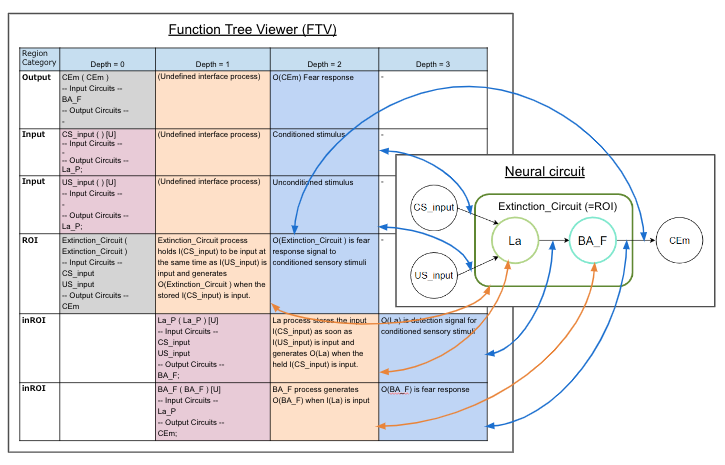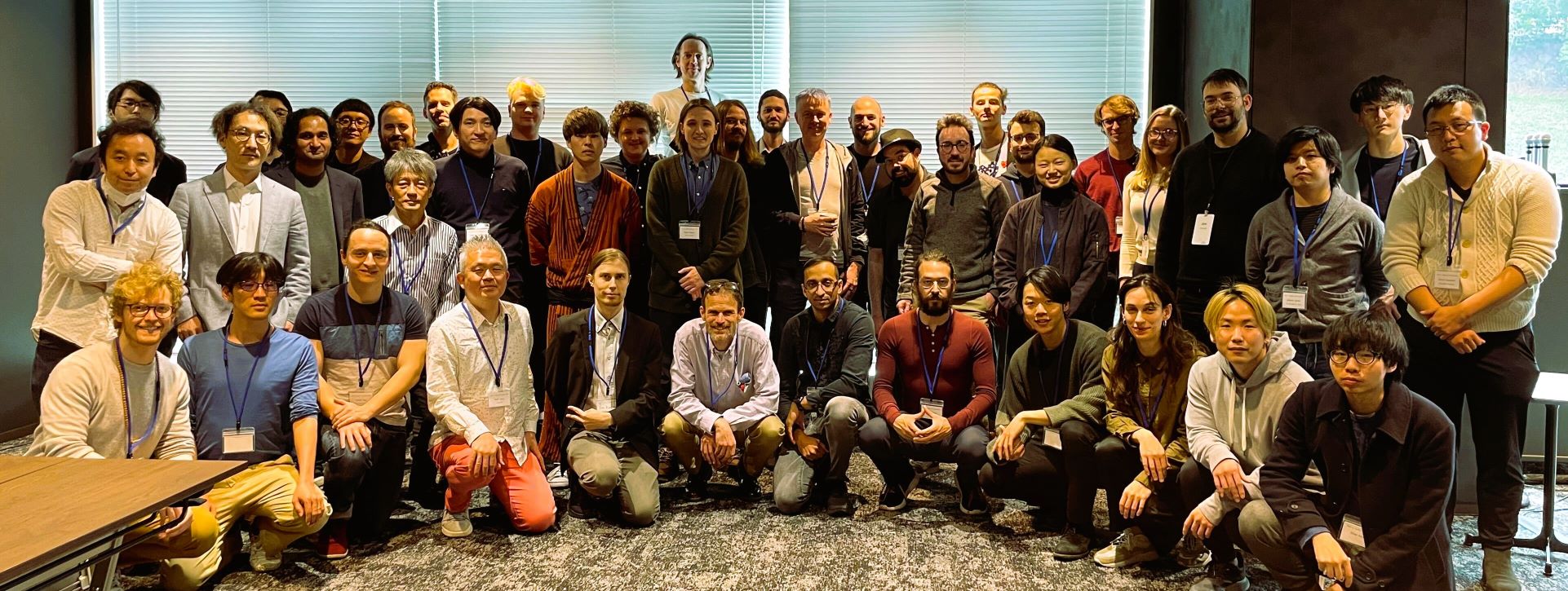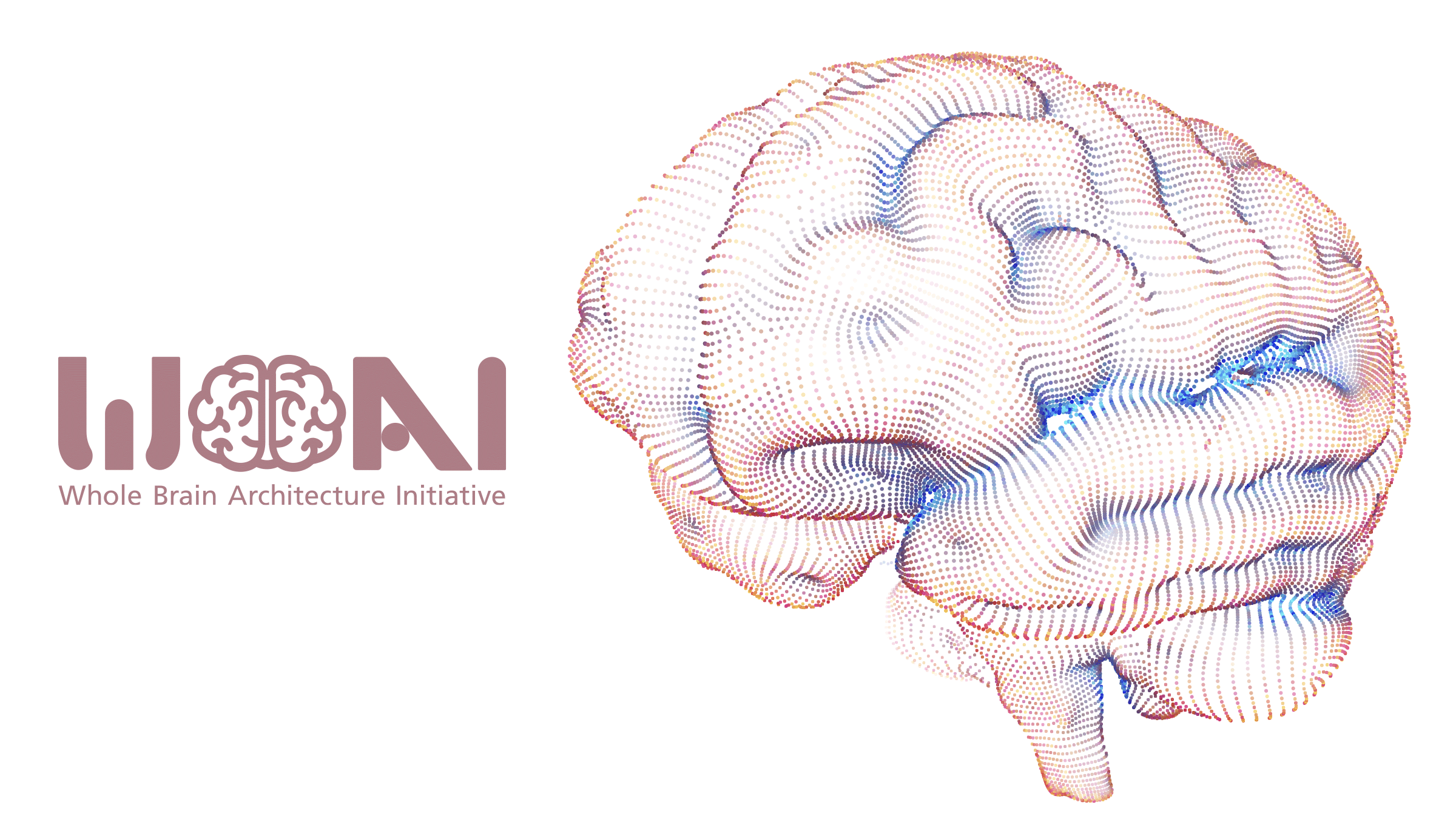Our activities in Fiscal Year 2022 (from April 2022 to March 2023 — the seventh year) include educational and R&D businesses, implemented according to our policy for FY2022.
Educational Business
The goal of our educational business is to help people who conduct research on the WBA approach on a long-term basis. In FY2022, WBAI held the seventh WBA symposium, four WBA seminars, and a WBA lecture (all in Japanese). Videos of the paid WBA seminars are distributed on Vimeo for a fee, and those from free events are distributed on YouTube.
The Seventh WBA Symposium
The symposium was held (in Japanese) online on October 12th, 2022 with the theme of “General Purpose Robotics and Brain Intelligence” with speakers Tadahiro Taniguchi (Ritsumeikan University), Tetsuya Ogata (Waseda University), and Tatsuya Matsushima (University of Tokyo). There were also presentations by Hiroshi Yamakawa and Naoya Arakawa (both WBAI).
It was organized by WBAI, supported by the MEXT project: “Deciphering and Manipulating Brain Dynamics Underlying Emergence of Behavioral Change: a Multidisciplinary Biology Approach,” and cooperated with Paramita, the art group.
In the symposium, Hiroyuki Ohta, who demonstrated computational function of the basal ganglia by animal experiments and simulations, was conferred the WBA Incentive Awards, and awards for Meritorious Service were presented to Rena Fujii for his contributions as the coordinator of the WBA seminar executive committee to organize events such as the symposium and WBA seminars in 2021 and to Koji Morikawa for his contributions as the auditor (2018-2019) and for soliciting supporting members and obtaining places for events.
WBA Seminars
In FY2022, WBAI held four seminars (in Japanese) with the following themes and speakers.
- 34th Seminar: May 11, 2022, AI Implementation of Metacognition and Consciousness and its Application to Next Generation BMI
with Ippei Fujisawa (ARAYA) and Shuntaro Sasai (ARAYA) - 35th Seminar: June 3, 2022, Toward Integration of Cross-disciplinary Knowledge in Eye Movements, with Yoshimasa Tawatsuji (Waseda University), Mayu Takahashi (Tokyo Medical and Dental University), and Tadashi Ogawa (Kyoto University)
- 36th Seminar: October 5, 2022, If Artificial Brains Have Minds, with Chie Hieida (Nara Institute of Science and Technology), Masataka Watanabe (The University of Tokyo), and Takuya Niikawa (Kobe University)
- 37th Seminar: February 17, 2023, Uncovering the Circuitry of the Cerebral Cortex and Its Role in the Mystery, with Hiroshi Ichisugi (AIST), Yoshimasa Tawatsuji (Waseda University), and Hideaki Shimazaki (Kyoto University)
WBA Lectures
A WBA Lecture was held to provide content more technical than WBA seminars.
- 4th Lecture: December 11, 2022, How to Create Brain Component Diagrams: Organizing Interprocess Relationships and Describing them with Probabilistic Models, with Yasuhiro Tanaka (Tamagawa University), Hiroshi Yamakawa (WBAI), Ayako Fukawa (WBAI), Tatsuya Miyamoto (Waseda University), Yoshimasa Tawatsuji (Waseda University), and Tadahiro Taniguchi (Ritsumeikan University).
R&D Business
The goal of our R&D business is to support research activities in the WBA approach.
The goal of WBAI’s R&D business is to support research activities in the WBA approach. WBAI has been promoting research and development of brain-inspired AGI through Brain Reference Architecture (BRA)-driven development since FY 2018.
BRA-driven development is a brain-inspired software development methodology using the Brain Information Flow (BIF), which is based on the mesoscopic-level anatomical structure of the brain relating to human cognitive behavior, and the Hypothetical Component Diagram (HCD), which describes the computational functions consistent with the BIF.
Currently, designing activities with the BRA-driven development include: BIF creation, BRA-DB, BRA automation, HCD design, and implementing activities include: biologically plausible implementation, to verify that tasks solvable by humans (and other animals) can be executed with biologically plausible computational mechanism (correlated with neural activity), and on the development of task/test environments that allows brain-inspired software.
We are also working on establishing methodology for BRA-driven development, including workflow and HCD-based implementation processes.
The activities financially supported by the MEXT project: “Deciphering and Manipulating Brain Dynamics Underlying Emergence of Behavioral Change: a Multidisciplinary Biology Approach” are noted as (Behavioral Change).
[Design: BIF Creation]
The BIF creation and related work include the following.
A provisional version of the WholeBIF database, a database of human brain anatomical structures, to be expanded. WholeBIF serves as a basis for comparing hypotheses on computational functions of brain regions (HCDs) described by researchers.
We analyzed the cerebral inter-area connections of existing computational models to extract standardized inter-area lamina projection patterns, and presented our findings at a local workshop (Behavioral Change).
We described the comprehensive neural circuitry around the amygdala complex as data and presented it at Neuro 2022 (Behavioral Change). We developed a technical roadmap for building a tool environment that enables comprehensive extraction of mesoscopic-level anatomical information of the brain from the neuroscience literature, and presented it at a local workshop.
[Design: BRA-DB]
The following was done for the construction, operation, and manual maintenance for the BRA database.
In HCD description, the previously ambiguous description of the computational function of software components corresponding to brain organs was clarified as process description, which is the procedure for converting input to output, and as output semantics description, which interprets the output of the component from the perspective of an observer outside the system. The process description provides specification to the software implementer, while the output semantics description serves to guide process description. A visualization tool ‘Function Tree Viewer,’ has been developed to show the descriptions in a hierarchical manner (see figure below).
 Figure: Neural Schematic Diagram Assigning Functions and Corresponding Function Tree Viewer (FTV)
Figure: Neural Schematic Diagram Assigning Functions and Corresponding Function Tree Viewer (FTV)
To enable exterior workers to build HCD data, we have begun to improve the workflow involved in the submission and review of HCD data (Behavioral Change).
[Design: BRA Automation]
It aims to streamline work through partial automation of data preparation and other processes in BRA-driven development. To extract information necessary for BIFs from figures in neuroscientific papers, we explored object detection algorithms and confirmed that brain regions and arrows that represent connections between them can be extracted from figures (Behavioral Change).
[Design: HCD Design]
We created HCD data on various brain organs.
HCDs were designed based on a probabilistic generative model inspired by hippocampal formation, and the paper on it was accepted for publication in a journal.
An HCD was designed with a BRA for double articulation of spoken language carried out in the auditory cortex, and presented at an NC workshop and the IEEE International Conference on Development and Learning ICDL 2022 [arXiv].
HCD design on functional hypotheses considering reciprocal inhibition mechanisms in the amygdala for elimination learning and recovery in fear conditioning was performed and presented at a local workshop (Behavioral Change).
In the BRA data review process, we clarified about a hundred of evaluation items in terms of BIF credibility, HCD consistency with BIF, and HCD functionality, and examined methods for the review process. We decided that many of the items could be automated, and began developing error detection tools (Behavioral Change).
[Design: HCD Integration]
In the later stages of BRA-driven development, HCDs built in a dispersed manner will be integrated. In this process, we pointed out the possibility of rapidly unraveling the function of the entire brain like a giant crossword puzzle, and presented the results at Neuro 2022.
[Implementation: Biologically Plausible Implementation]
Active vision is being implemented (example).
[Implementation: Environment Development]
We are building software platforms and testing environments. Several members of the SIG-WBA (see below) are discussing the implementation of visual systems, etc.
[Methodology: Process Establishment]
We are working on establishing a methodology, workflow, and HCD-based implementation process for all aspects of BRA-driven development.
The current progress of AI, in which the ability of entification to capture existence is expanding, and the prospect that the realization of AGI is not far off, based on the perspective that the brain can perform various tasks in a single system, and the result was presented at Neuro 2022 and a local workshop.
Forming open AI development communities
From July 2022, Hiroshi Yamakawa joined the MEXT project: “Deciphering and Manipulating Brain Dynamics Underlying Emergence of Behavioral Change: a Multidisciplinary Biology Approach (Behavioral Change)” as a principal investigator, with Yoshimasa Tawatsuji and Akira Taniguchi as research assistants, and Koichi Takahashi as a research collaborator.
Research collaboration on the Whole Brain Probabilistic Generative Model (WB-PGM), an approach to constructing whole brain architecture using probabilistic generative models is conducted with Ritsumeikan University’s R-GIRO Research Program “Symbolic Emergent Systems Science: Research Center for Academic Integration of Real-World Artificial Intelligence and Next-Generation Symbiotic Society.”
We have started collaboration with Professor Yoshiko Honda at Tokyo Women’s Medical University on the creation of the BRA for the hippocampal formation (with a focus on the presubiculum).
In 2022, SIG-WBA meetings were revived online (in Japanese on Slack).
Activities to make AGI Beneficial
Because of the potentially large impacts of AGI on humankind, we are conducting activities to make it beneficial, safe, and democratized.
On June 14, 2022, Hiroshi Yamakawa gave a keynote lecture “Future Intelligence and Biases” on the life in the context of the progress of AI with the themes “Life Penetrating the Universe” and “Life’s Wish” at the first day of the 36th National Convention of the Japanese Society for Artificial Intelligence (JSAI). He also gave a related lecture entitled “Intelligence for the Survival of Life” on July 22 at the Center of Advanced Research for Human-AI Symbiosis Society.
A paper on “explaining intelligent agent’s future motion on basis of vocabulary learning with human goal inference” was published in IEEE Access.
The recent rapid technological progress in large-scale generative modeling is stimulating the worldwide research field of AI alignment, which aims to align artificial intelligence with humanity. The first Japan AI Alignment Conference was held in Tokyo in March 2023, and Hiroshi Yamakawa (Chair), Yutaka Matsuo (Vice-chair), and Koichi Takahashi (Vice-chair) from WBAI participated. On the first day, in the “Overview of Japanese AI safety research directions” session, Yamakawa introduced the “whole brain architecture approach for AGI development” and Takahashi introduced the scenarios of AI development [arXiv] under the title of “the automation of science/robotic biology/scenarios and branch points to future.” On the second day, Yamakawa gave a presentation titled “Life revolution and Digital sapience,” focusing on a scenario of symbiosis between humans and AI.
 Photo from the Japan AI Alignment Conference 2023
Photo from the Japan AI Alignment Conference 2023
from the left in the middle row, the second person is K. Takahashi
and the fourth person is H. Yamakawa.
WBAI Activities and Volunteering
As in previous years, activities such as the organization of the event were realized under the leadership of the WBA-Seminar Executive Committee, consisting mainly of volunteers. Other participants in the organization of the event included contracted staff at the Secretariat and regular members.
Financial Statements for FY2022
The balance sheet and cash flow for FY2022 are presented below (Table 1 and Table 2).
The revenues were 1.87 million yen and the expenditure totaled 0.80 million yen for administration and 1.18 million yen for operation (total expenditure was 1.98 million yen to yield 0.12 million yen deficit).
The businesses of WBAI have been financially supported by supporting members. (As of March 2023, there were eight supporting members consisting of enterprises and individuals.) The other incomes include fees from the participants of the WBA seminars and crowdfunding (in Japanese).
Honoraria were paid to the speakers of the WBA Seminars. The subcontractor/outsourcing expenses for operation includes the cost of R&D, which was mostly carried out with the budget of exterior research institutions.
The expenses for secretariat personnel (shown in Subcontracting/outsourcing Expenses) were apportioned by 50% (50/50) for operating and administrative expenses. The remuneration was paid to an accountant office. The rent for the office was free of charge by courtesy of Garm Inc.
Table 1: Balance Sheet (as of March 31, 2023)
| Items | Amount (JPY) | ||||
| Ⅰ
|
Assets | ||||
| 1. | Current Assets | ||||
| Cash and Saving Account | 8,434,335 | ||||
| Accounts Receivable | 208,524 | ||||
| Total Current Assets | 8,642,859 | ||||
| Total Assets | 8,642,859 | ||||
| Ⅱ
|
Liabilities | ||||
| 1. | Current Liabilities | ||||
| Advance Received | 320,000 | ||||
| Withholding Taxes | 7,963 | ||||
| Total Current Liabilities | 327,963 | ||||
| Total Liabilities | 327,963 | ||||
| Ⅲ
|
Net Assets | ||||
| Retained Net Assets at the Beginning of Period | 8,430,833 | ||||
| Net assets variation | -115,937 | ||||
| Total Net Assets | 8,314,896 | ||||
| Total Liabilities and Net Assets | 8,642,859 | ||||
Table 2: Cash Flow
| Items | Amount (JPY) | ||||
| Ⅰ
|
Recurring Revenues | ||||
| 1 | Fees | ||||
| Fees from Regular Members | 150,000 | ||||
| Fees from Supporting Members | 1,520,000 | ||||
| Total Fees | 1,670,000 | ||||
| 2 | Other Revenues | ||||
| Interest Income | 73 | ||||
| Other Income | 198,524 | ||||
| Total Recurring Revenues | 1,868,597 | ||||
| Ⅱ
|
Ordinary Expenses | ||||
| 1 | Operating Expenses | ||||
| ⑴ | Total Personnel Expenses | 0 | |||
| ⑵ | Other Expenses | ||||
| Honoraria | 226,000 | ||||
| Subcontractor/outsourcing Expenses | 800,376 | ||||
| Communication | 158,227 | ||||
| Prizes/Awards | |||||
| Other | |||||
| Total Other Expenses | 1,184,603 | ||||
| Total Operating Expenses | 1,184,603 | ||||
| 2 | Administrative Expenses | ||||
| ⑴ | Total Personnel Expenses | 399 | |||
| ⑵ | Other Expenses | ||||
| Subcontractor/Outsourcing Expenses | 528,000 | ||||
| Remuneration | 264,000 | ||||
| Other | 7,532 | ||||
| Total Other Expenses | 799,532 | ||||
| Total Administrative Expenses | 799,931 | ||||
| Total Ordinary Expenses | 1,984,534 | ||||
| Net Assets Variation of the Year | -115,937 | ||||
| Net Asset brought forward | 8,430,833 | ||||
| Net Asset carried forward | 8,314,896 | ||||



 Japanese
Japanese